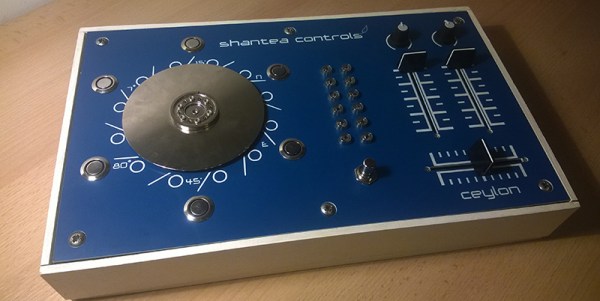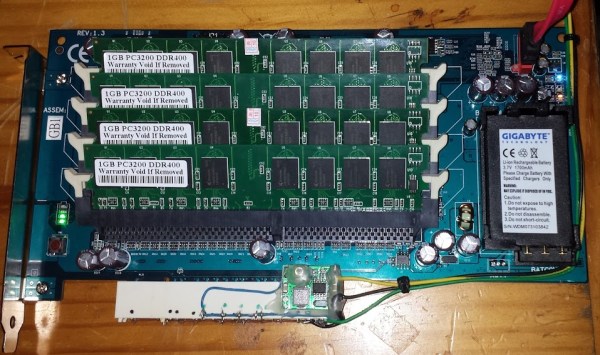[shantea] builds MIDI controllers, and after a successful first endeavor with a matrix of buttons and knobs, he decided to branch out to something a little bit cooler. It’s called Ceylon, and it’s effectively a turntable controller built from an old hard drive.
As a contrast to the first MIDI controller, this would be a stripped-down build, with just three faders, LEDs for eye candy, a pair of pots for gain control, and a hard disk surrounded by six anti-vandal buttons. The hard disk is the star of the show, acting as a rotary encoder.
When manually spun, the hard disk generates a few phases of sinusoidal waves. The faster you spin it, the higher the amplitude and frequency. These signals are far too weak to be sampled directly by a microcontroller, and for digital control – as in, MIDI – you don’t need to read the analog signals anyway. These signals were turned digital with the help of an LM339 quad comparator. With two of these comparators and signals out of the hard disk that are 90 degrees out of phase, quadrature encoding is pretty easy.
The software for this MIDI controller is based on the OpenDeck Platform, a neat system that allows anyone to create their own MIDI controllers and devices. It’s also a great looking board that seems to perform well. Video below.












